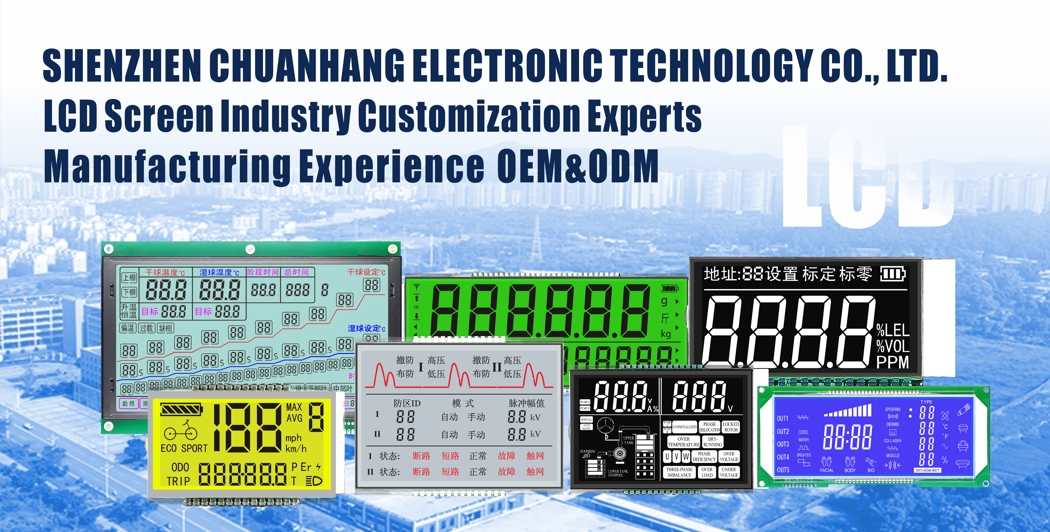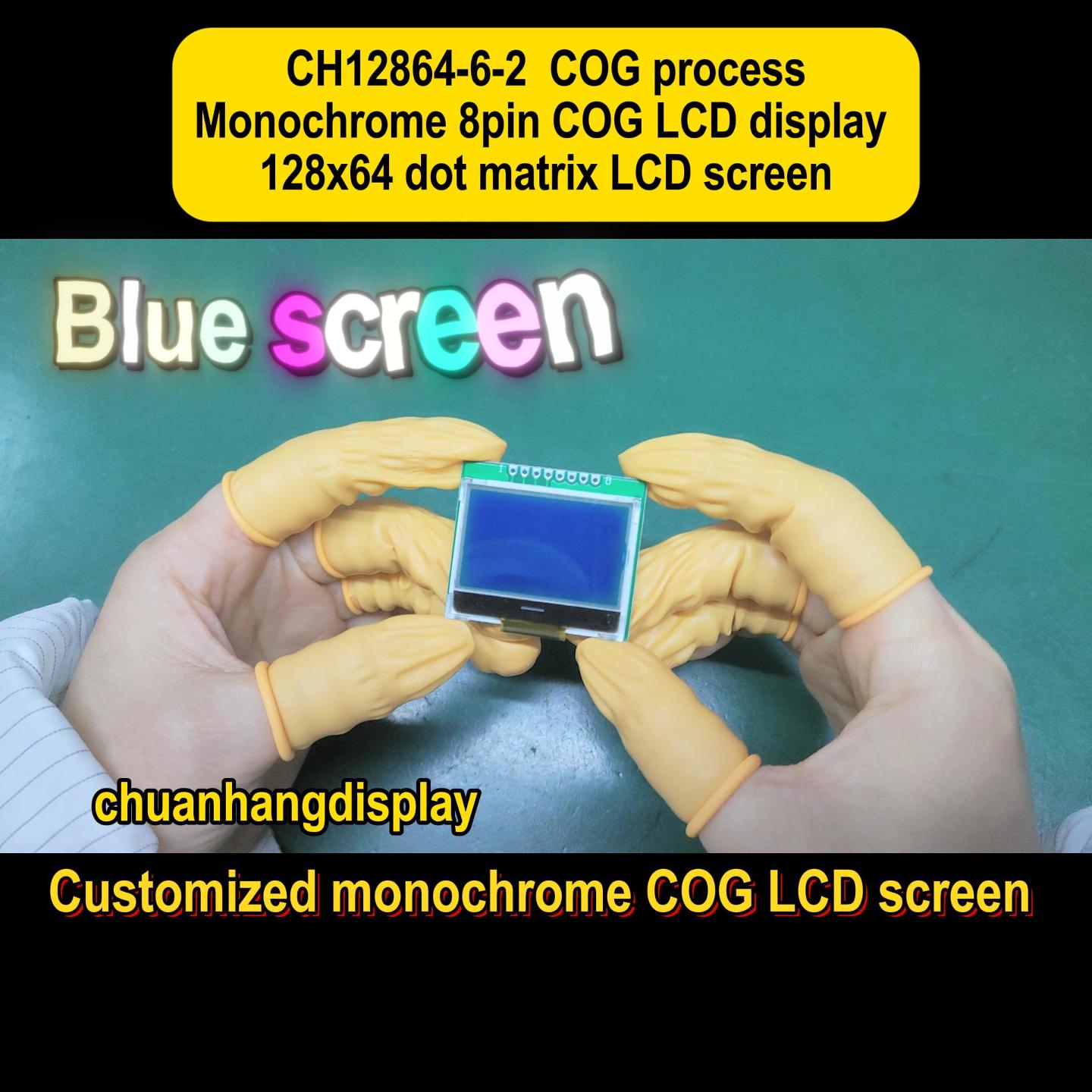In the world of display technology, the COG LCD Module stands out as a compact, efficient solution for various electronic devices. Short for "Chip-On-Glass Liquid Crystal Display Module," this innovative component integrates the driver IC directly onto the glass substrate, eliminating the need for a separate printed circuit board in many cases. This design not only saves space but also reduces costs, making the COG LCD Module a popular choice in industries ranging from consumer electronics to medical equipment. As devices become smaller and more energy-efficient, understanding the COG LCD Module is crucial for engineers, designers, and enthusiasts alike. In this article, we'll explore seven key aspects of the COG LCD Module, delve into its inner workings, and address common issues users might encounter. Whether you're integrating it into a new product or troubleshooting an existing one, this guide will provide valuable insights into the COG LCD Module's capabilities and challenges.

A COG LCD Module is a type of liquid crystal display where the integrated circuit (IC) driver is mounted directly on the glass panel. This contrasts with traditional LCD modules that use a separate flexible printed circuit or tape carrier package. The COG LCD Module approach minimizes the overall footprint, enhances reliability, and simplifies assembly. Typically, the COG LCD Module consists of a glass substrate with patterned electrodes, a liquid crystal layer, and the bonded driver chip. This setup allows for high-resolution displays in a slim form factor, ideal for portable devices like smartwatches, calculators, and industrial instruments. The COG LCD Module is known for its low power consumption and durability, making it a go-to option for applications where space and efficiency are paramount. By integrating the driver onto the glass, the COG LCD Module reduces interconnection points, which can lower the risk of failure and improve overall performance. As technology advances, the COG LCD Module continues to evolve, offering better contrast ratios, wider viewing angles, and enhanced color reproduction.
The operation of a COG LCD Module revolves around the principles of liquid crystal technology and integrated electronics. When voltage is applied to the electrodes on the glass substrate, the liquid crystals align to control light passage, creating images or text. The driver IC, bonded directly to the glass in a COG LCD Module, processes input signals and manages the pixel matrix. This direct connection reduces signal delay and electromagnetic interference, resulting in a sharper and more responsive display. In a typical COG LCD Module, the IC uses a combination of row and column drivers to address individual pixels, allowing for precise control over the display content. The COG LCD Module often incorporates a backlight system, such as LED arrays, to ensure visibility in various lighting conditions. Additionally, the COG LCD Module can support different modes like twisted nematic (TN) or in-plane switching (IPS) for improved viewing angles and color accuracy. Understanding these mechanics helps in optimizing the COG LCD Module for specific applications, ensuring it meets performance requirements while maintaining energy efficiency.
The COG LCD Module offers several benefits that make it a preferred choice in many electronic designs. First, its compact size is a major advantage; by eliminating external driver components, the COG LCD Module enables slimmer and lighter devices. This is particularly valuable in wearable technology and mobile gadgets where every millimeter counts. Second, the COG LCD Module tends to be more cost-effective due to reduced material and assembly costs. With fewer parts and simplified manufacturing processes, producers can achieve economies of scale without compromising quality. Third, the COG LCD Module enhances reliability by minimizing solder joints and connectors, which are common points of failure in other display types. This leads to a longer lifespan and better performance in harsh environments. Fourth, the COG LCD Module supports low power operation, extending battery life in portable applications. Fifth, it allows for high-density pixel layouts, enabling sharp and detailed displays even in small formats. Overall, the COG LCD Module combines efficiency, durability, and affordability, making it a versatile solution across various sectors.

The COG LCD Module finds use in a wide array of industries due to its versatility and performance. In consumer electronics, it's commonly seen in devices like digital watches, fitness trackers, and handheld gaming consoles, where its small form factor and low energy consumption are ideal. The automotive industry employs the COG LCD Module in dashboard displays, infotainment systems, and rearview cameras, benefiting from its reliability and clear visibility. Medical devices, such as portable monitors and diagnostic equipment, rely on the COG LCD Module for accurate readings and robust operation in clinical settings. Industrial applications include control panels, instrumentation, and embedded systems, where the COG LCD Module withstands temperature variations and mechanical stress. Additionally, the COG LCD Module is used in home appliances like thermostats and smart home controllers, providing user-friendly interfaces. Its adaptability to custom designs also makes the COG LCD Module suitable for niche products, from military gear to educational tools. As IoT and smart devices proliferate, the COG LCD Module continues to play a critical role in enabling efficient and compact displays.
When designing with a COG LCD Module, several factors must be considered to ensure optimal performance. First, the electrical interface is crucial; the COG LCD Module typically requires specific voltage levels and signal timing, so compatibility with microcontrollers or processors is essential. Designers should verify the driving method, such as parallel or serial communication, to avoid mismatches. Second, mechanical integration involves accounting for the COG LCD Module's dimensions, mounting options, and connector types. Proper alignment and stress relief can prevent damage during assembly or use. Third, environmental conditions like temperature, humidity, and shock resistance should be evaluated, as the COG LCD Module may need conformal coatings or enhanced sealing for durability. Fourth, the optical properties of the COG LCD Module, including brightness, contrast, and viewing angles, must align with the application's requirements. Selecting the right backlight and polarizer can enhance usability. Fifth, power management is key; the COG LCD Module should be paired with efficient power supplies to minimize energy drain. By addressing these aspects, developers can leverage the full potential of the COG LCD Module in their projects.
Despite its advantages, the COG LCD Module can encounter problems that affect performance. One common issue is display flickering or ghosting, often caused by improper voltage supply or driver IC malfunctions. This can be mitigated by ensuring stable power sources and checking for firmware updates. Another problem is dead pixels or lines on the COG LCD Module, which may result from manufacturing defects or physical damage. In such cases, replacement might be necessary if the issue persists. Temperature sensitivity is also a concern; extreme heat or cold can alter the liquid crystal response in the COG LCD Module, leading to slow refresh rates or image retention. Using temperature-compensated designs or operating within specified ranges can help. Additionally, the COG LCD Module may suffer from connection issues, such as poor bonding between the IC and glass, which can cause intermittent displays. Regular inspections and quality control during production are vital. Lastly, backlight failure in the COG LCD Module can reduce visibility, often due to LED wear or driver circuit problems. Choosing high-quality components and proper heat dissipation can extend the backlight's life. Understanding these common issues with the COG LCD Module allows for proactive troubleshooting and maintenance.
Many users have questions about the COG LCD Module, so let's address some frequent queries. What is the typical lifespan of a COG LCD Module? Generally, a well-maintained COG LCD Module can last 50,000 to 100,000 hours, depending on usage conditions and environmental factors. How do I clean a COG LCD Module? Use a soft, lint-free cloth slightly dampened with isopropyl alcohol, and avoid harsh chemicals that could damage the surface. Can a COG LCD Module be repaired if damaged? Minor issues like loose connections might be fixable, but internal defects often require replacement due to the integrated nature of the COG LCD Module. What are the power requirements for a COG LCD Module? Most COG LCD Modules operate on low voltage, such as 3.3V or 5V, but always refer to the datasheet for specific details. How does a COG LCD Module compare to other LCD types? The COG LCD Module is more compact and cost-effective than COF (Chip-On-Flex) or COB (Chip-On-Board) modules, but it may have limitations in flexibility or high-end applications. By addressing these questions, users can better manage their COG LCD Module implementations.
In summary, the COG LCD Module is a powerful and adaptable display solution that excels in compact, energy-efficient applications. From its fundamental structure to practical considerations and common pitfalls, understanding the COG LCD Module can lead to more effective designs and smoother operations. As technology advances, the COG LCD Module will likely continue to innovate, offering even greater performance and reliability. Whether you're an engineer, hobbyist, or industry professional, keeping these insights in mind will help you harness the full potential of the COG LCD Module in your projects.